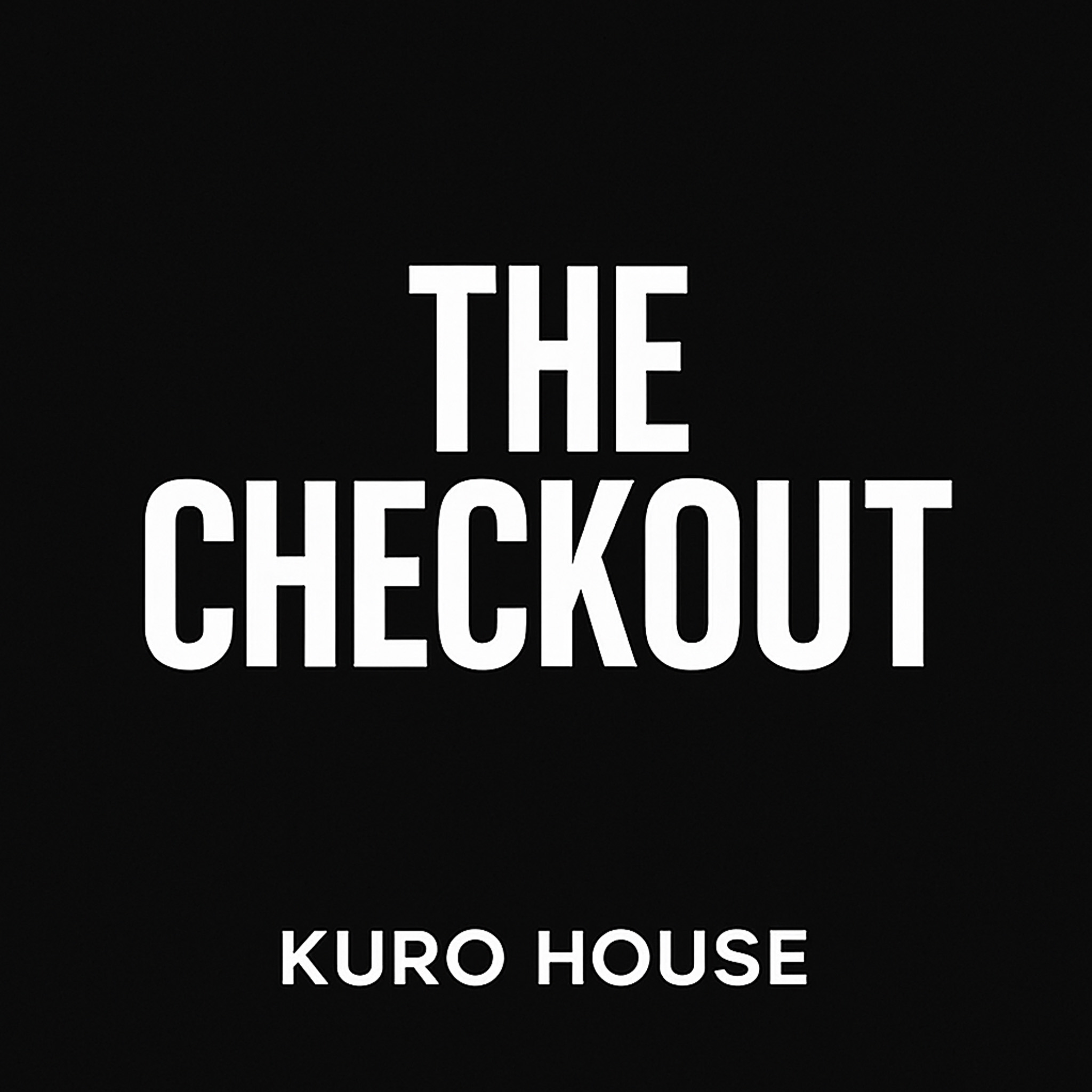Listen To The Show
Transcript
Hello — this is The Checkout by Kuro House, your daily sharp take on the retail and tech stories that matter. Today we’ve got five closely read stories from the last 24 hours: a big own‑brand push from Very, Burberry’s return to the FTSE 100, eBay widening its authenticity programme, Currys’ latest trading update and shareholder moves, and bleak new figures on retail crime delivered to parliament. I’ll walk you through the facts, quotes and numbers so you can judge the implications for strategy, margins and customer trust.
Very has launched a new own‑brand label called The Very Collection, the retailer announced in The Retail Bulletin on 5 September 2025. The move is described as an “evolution” of Very’s own‑brand ranges after they were “modernised,” bringing elevated design elements, quality staples and trend‑led capsule collections across women’s, men’s and kids’ clothing with a head‑to‑toe focus. Very says it has increased its own‑brand product options by 15% year‑on‑year and set prices that span from £4 up to £250, signaling an effort to cover basics and higher‑end staples within the same proposition. Sam Wright, Very Group’s chief commercial and strategy officer, framed the launch as the “natural next step” that brings V by Very and Everyday under one revitalised offering, promising continuity for customers while encouraging discovery. The initiative is backed by the Haus of Flamingo Autumn/Winter 25 campaign, called The Exhibition, which the retailer says shines a spotlight on more of its own brands than ever before and includes a new TV ad plus social and influencer‑led content. In a brick‑and‑mortar moment for an online retailer, Very is also staging a two‑day immersive fashion experience, The Very Big Wardrobe, on London’s New Bond Street on 5 and 6 September — a clear bid to translate online curation into physical brand theatre. Jessica Myers, Very’s chief customer officer, emphasized that the season’s ad showcases more of Very’s own‑brand range than previous campaigns, underlining that marketing and experiential tactics will be central to driving uptake of the new collection.
Burberry will rejoin the FTSE 100 on 22 September, Retail Gazette reported on 4 September 2025, a sign that investor confidence has returned amid Joshua Schulman’s turnaround plan. The brand had been relegated to the FTSE 250 after 15 years in the top tier, but shares have jumped nearly 95% since Schulman took the helm — a dramatic market vote of confidence tied to repositioning Burberry as a champion of timeless British luxury. The strategy is heavily focused on core categories, especially outerwear, with the £1,900 signature check‑print coats called out as emblematic of the “regrounding” of the brand. Financials remain a work in progress: Burberry reported an operating loss of £3m for the 52 weeks to 29 March, yet comparable store sales improved in several key regions and management expects cost‑saving measures totalling about £80m a year to start feeding through later in the year. Schulman’s public line was pragmatic — noting the external environment is still challenging but expressing conviction in the path ahead, citing improved first‑quarter comparable sales and an uptick in brand desirability. The FTSE 100 return is as much symbolic as it is financial, reflecting stabilisation in sales and brand perception, but the company is also pursuing hard cost actions including a plan to cut 1,700 roles by 2027 — a reminder that luxury repositioning often pairs creative repositioning with structural cost‑discipline.
eBay has expanded its authenticity programme to cover apparel, shoes and accessories in the UK, Retail Gazette reported on 4 September 2025, positioning the marketplace as a one‑stop “head‑to‑toe” authentication provider for pre‑loved fashion. The service builds on eBay’s existing guarantees for luxury watches, handbags, sneakers and jewellery and will see eligible items examined by expert authenticators at eBay’s UK authentication centre before shipping to buyers with a unique QR‑enabled card. eBay frames the rollout as addressing trust, with GM European fashion Kirsty Keoghan saying the expansion helps make pre‑loved fashion a natural first choice by giving buyers confidence that “every item has been verified by experts.” The programme is free for buyers, and eBay cites scale: since launching the authenticity guarantee in the US the platform says it has inspected 15 million items globally — including over one million in a single quarter earlier this year — and in the UK alone it claims over 10 million fashion items authenticated since introducing the service. eBay also supplied consumer demand stats: “vintage” was searched more than 1,000 times per minute in June 2024, refurbished and second‑hand items now account for 40% of eBay’s gross merchandise value globally, and nearly three in five consumers bought pre‑loved goods in the past year. The expansion sets thresholds across five categories (for example sneakers £100+, watches £1,500+, jewellery £500+, and apparel/shoes/accessories £200+) and signals eBay’s intent to remove quality and authenticity concerns from the circular fashion decision, which could shift buying patterns and shrink barriers to resale adoption.
Currys reported a solid but steady trading snapshot for the 17 weeks to 30 August 2025, and GlobalData’s Oliver Maddison framed the update for Retail Times as a credible performance with caveats. Currys delivered like‑for‑like growth of 3% in the UK and Ireland and group‑wide — not spectacular, but consistent with expectations despite investor nerves about extra UK government policy costs. The market reaction, however, was amplified by financial engineering: shares jumped around 20% after Currys announced a £50m share buyback alongside a previously announced £25m of cash dividends. The service side of Currys’ business is the standout, with iD Mobile reporting 22% year‑on‑year subscriber growth and an increase in credit adoption from 21.4% to 23.3%, and the company highlighted strong sales of AI computing across markets. Maddison’s analysis warns that the retail electricals side is “more average than outstanding,” and Currys can’t be complacent with competition from Amazon, a reinvigorated John Lewis & Partners leaning on its “Never Knowingly Undersold” positioning, and AO expanding its range and moving into a mobile play. Currys’ strategic advantage remains its unique omnichannel scale as the UK’s main general electricals specialist, which GlobalData suggests allows it to compete on range, in‑store expertise and local proximity — but those strengths will need ongoing investment to defend margins and growth in a crowded field.
The Association of Convenience Stores (ACS) told the Business and Trade Select Committee on 4 September 2025 that crime is now a make‑or‑break factor for small retailers, Retail Times reported. ACS chief executive James Lowman warned that the scale and nature of theft and abuse has shifted — he said shop theft “is not a new thing,” but what’s changed is “the lack of any regard for consequences that thieves have,” and that the cost and human impact of crime is the number one issue for members. The evidence came as part of scrutiny over the Government’s Small Business Strategy, which itself pledged measures to tackle crime including “creating safe places to do business,” adding 13,000 more police officers to boost visible community policing and rolling out the Safer Streets initiative. The ACS 2025 Crime Report figures are stark: retailers spent over half a billion pounds in the last two years on crime prevention, yet were victims of over 6.2 million incidents of theft in the past year alone. Lowman highlighted a huge reporting gap too — official Office for National Statistics figures record just over half a million shop thefts, which is “less than a tenth of the reality facing retailers,” according to the ACS — an indication that the vast majority of incidents go unrecorded in formal crime statistics. That contrast has policy implications: if official data under‑represents the scale, resource allocation and policing strategies risk being misaligned with the day‑to‑day reality facing small businesses and convenience retailers.
Thanks for listening. These five stories show a retail landscape that’s increasingly about control — of brand, of authenticity, of costs, and of security — and each organisation’s choices now will shape whether they win long term customer trust or simply defend short‑term margins. I’m looking forward to hearing which of these developments you think will move the market most; we’ll be back tomorrow with the next set of moves and measures.


